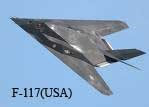 B-52 Bomber carrying X-43 Hyperplane for experiments
B-52 Bomber carrying X-43 Hyperplane for experimentsThe aircraft is first propelled by jet engines to the required height. Other method is to take the aircraft to required altitude by another plane. Because neither scramjets nor ramjets can operate efficiently when they are traveling below Mach 2 or 3, a third type of propulsion (perhaps turbojet or rocket) is required for takeoff. So-called rocket-based combined-cycle engines, which could be used in a space vehicle, rely on a rocket that is integrated within the scramjet combustor to provide thrust from takeoff through subsonic, low-supersonic and then ramjet speeds. Ramjet operation is then followed by scramjet propulsion to at least Mach 10 or 12, after which the rocket is utilized again to supplement the scramjet thrust. Above Mach 18, the rocket by itself propels the vehicle into orbit and enables it to maneuver in space. NASA is currently testing several variations of such a system.
Any aircraft faster than the speed of sound creates a shock wave, as air "piles up" in front of the vehicle. Faster the aircraft, more severe the shock wave. Most hypersonic designs intend to confine the most of the high pressure airflow from the shock wave beneath the vehicle, so that it appears to be 'riding' the top of the wave. This results in lower drag to lift ratios than other hypersonic designs. In the process also giving them all a characteristic look.
The landing procedures begin by the switching off of the scramjet engines. Then the horizontal flight is done using normal jet engines and lands like a normal aircraft. Unlike a rocket that carries its own oxygen for combustion, the X-43A's scramjet-short for supersonic-combustion ramjet-scoops air from the atmosphere, making the aircraft lighter, which enables it to carry heavier payloads. The hydrogen-fuelled aircraft has a wingspan of approximately five feet, measures 12 feet long and weighs about 2,800 pounds.













